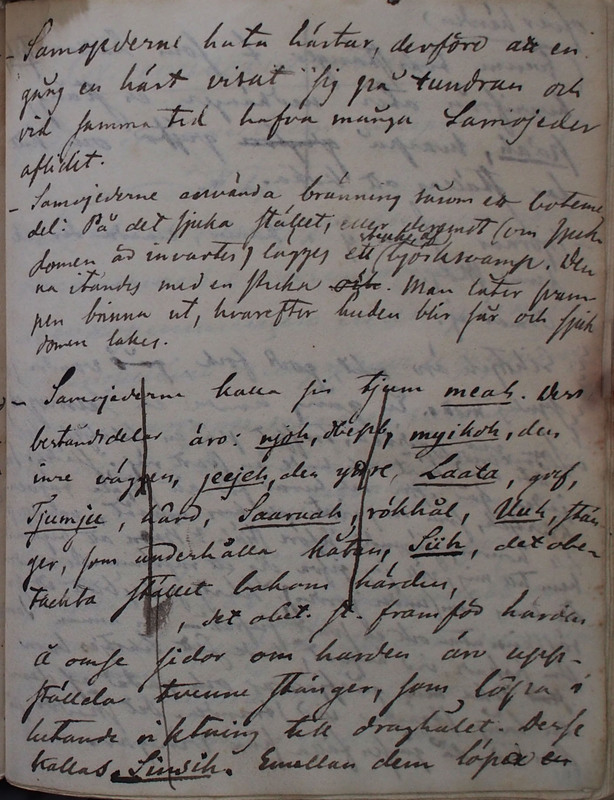Strödda ethnographiska anteckningar. 008
Title
Strödda ethnographiska anteckningar. 008
Description
| Samojederne hata hästar, derföre att en gång en häst visat sig op tundran och vid samma tid hafva många Samojeder aflidit. |
The Samoyeds hate horses, because once a horse appeared in the tundra and at the same time many Samoyeds died. |
| Samojederne använda bränning såsom ett boteme- del: På det sjuka stället, eller deremodt (om sjuk- domen är invartes) lägges ett sticke af björksvamp. Den- na itändes med en sticka. Man låter svam- pen brinna ut, hvarefter huden blir sår och sjuk- domen läkes. |
The Samoyeds use burning as a curing measure. A piece of birch fungus is laid in the place that is ill, or towards it (if the disease is internal). This is lit with a stick. The fungus is allowed to burn out, after which the skin becomes sore and the illness heals up. |
| Samojederna kalla sin tjum
Dess beståndsdelar äro: njoh, дверь, myikoh, den inre väggen, jeejeh, den yttre [väggen], Laata,golf, Tjumju, härd, Saaruah, rökhål, Uuh, stån- ger, som underhålla kåtan, Siih, det obe- täckta stället bakom härden, [empty space], det obet[äckta] st[ället] framför härden. |
The Samoyeds call their tent meah. Its constituents are: njoh 'door', myikoh 'inner wall', jeejeh, 'outer [wall]', Laata 'floor', Tjumju 'hearth', Saaruah 'smoke hole', Uuh 'poles which uphold the tent', Siih 'uncovered place behind the hearth', [empty space] 'uncovered place in front of the hearth'. |
| Å omse sidor om härden äro upp- ställda tvenne stånger, som löpa i lutande riktning till draghålet. Desse kallas Siinsih. Emella dem löpa en |
On both sides of the hearth there are two poles which slope in the direction of the smoke hole. These are called Siinsih. Between them there are. |

